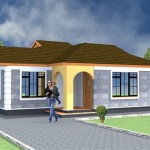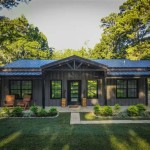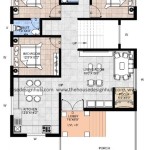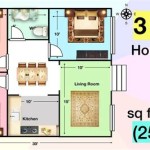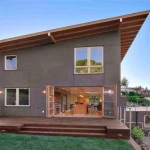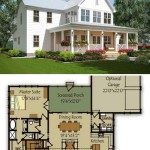Floor Plans for Lake Houses: Designing the Ideal Lakeside Retreat
Lake houses offer a unique opportunity to connect with nature, providing a tranquil escape from the stresses of everyday life. Designing the ideal lake house, however, requires careful consideration of various factors, with the floor plan being paramount. A well-designed floor plan maximizes the enjoyment of lakeside living, taking into account the surrounding environment, intended usage, and the lifestyle of the occupants. This article explores key considerations for lake house floor plans, offering insights into creating a functional and aesthetically pleasing space that complements the beauty of the lake environment.
Prioritizing Views and Natural Light
One of the primary benefits of a lake house is the stunning view it provides. Floor plans should be designed to capitalize on this advantage by incorporating large windows, expansive sliding glass doors, and strategically placed decks or balconies. The orientation of the house is crucial; ideally, the main living areas, such as the living room, dining room, and kitchen, should face the lake. This allows residents to enjoy panoramic views while cooking, dining, or relaxing. Careful consideration should also be given to the direction of sunlight. Southern exposure can provide ample natural light but may also lead to overheating during the summer months. Overhangs, awnings, or strategically planted trees can help mitigate this issue.
The use of open floor plans is particularly well-suited for lake houses as they maximize the flow of light and air throughout the space. An open concept living area that encompasses the kitchen, dining, and living room creates a sense of spaciousness and encourages socialization. Consider incorporating cathedral ceilings or vaulted ceilings to further enhance the sense of openness and allow more natural light to penetrate the interior. Window placement should be deliberate, considering both the view and the privacy of the occupants. Clerestory windows, for example, can bring in natural light without compromising privacy from neighboring properties. Skylights can also be used to brighten interior spaces, particularly in areas that may not have direct access to windows.
Beyond the primary living areas, bedrooms should also benefit from lake views whenever possible. Orienting bedrooms towards the lake allows residents to wake up to stunning vistas each morning. Even smaller windows in bedrooms can provide glimpses of the lake and surrounding landscape. Guest bedrooms should also be considered, providing comfortable and inviting spaces for visitors to enjoy the lakeside setting. The placement of windows should be carefully considered to ensure both privacy and access to natural light and views.
The use of transparent or translucent materials can further enhance the connection between the interior and exterior. Glass railings on decks or balconies, for instance, provide unobstructed views of the lake. Similarly, glass doors that lead to outdoor spaces can seamlessly blend indoor and outdoor living areas. These design choices create a sense of continuity between the house and its natural surroundings, enriching the overall living experience.
Accommodating Outdoor Living
Lake houses are often used for outdoor recreation and relaxation, so the floor plan should seamlessly integrate indoor and outdoor living spaces. Decks, patios, porches, and screened-in areas are essential components of a well-designed lake house. These outdoor spaces provide opportunities for dining, lounging, entertaining, and simply enjoying the fresh air and natural beauty of the lake environment. The size and configuration of these outdoor spaces should be tailored to the specific needs and preferences of the occupants.
A large deck or patio is ideal for hosting gatherings and enjoying al fresco meals. Consider incorporating an outdoor kitchen or grilling area to further enhance the outdoor dining experience. Comfortable seating, such as lounge chairs, sofas, and dining tables, should be strategically placed to create inviting and functional outdoor living areas. The addition of an outdoor fireplace or fire pit can extend the usability of these spaces into the cooler months. Pergolas or awnings can provide shade and protection from the sun, creating a more comfortable outdoor environment.
Screened-in porches offer protection from insects and the elements, allowing residents to enjoy the outdoors even when the weather is not ideal. These spaces are perfect for relaxing with a book, enjoying a cup of coffee, or simply taking in the scenery. The floor plan should facilitate easy access to screened-in porches from the main living areas, creating a seamless transition between indoor and outdoor spaces. Consider incorporating comfortable seating, lighting, and ceiling fans to enhance the ambiance of the screened-in porch. A small dining table or bar area can also be included to create a versatile space for dining and entertaining.
Pathways and landscaping should also be carefully considered to enhance the connection between the house and the lake. Walkways leading from the house to the water's edge should be well-maintained and accessible. Landscaping can be used to define outdoor spaces, provide privacy, and create a visually appealing environment. Native plants are particularly well-suited for lake houses as they are adapted to the local climate and require minimal maintenance. Consider incorporating elements such as stone patios, gravel paths, and wooden decks to create a natural and inviting outdoor environment.
Boathouses and docks are often essential components of a lake house. These structures should be integrated into the overall design of the property, creating a seamless transition between the house and the water. The floor plan of the house should allow for easy access to the boathouse or dock, ensuring that residents can easily enjoy water activities such as swimming, boating, and fishing. Consider incorporating storage space for water sports equipment and accessories near the boathouse or dock to keep these items organized and easily accessible.
Catering to Functionality and Lifestyle
Beyond aesthetics and views, a successful lake house floor plan must be functional and cater to the lifestyle of the occupants. This involves considering factors such as the number of bedrooms and bathrooms, storage space, laundry facilities, and accessibility. The floor plan should also take into account the potential for entertaining guests and accommodating different age groups and physical abilities.
The number of bedrooms and bathrooms should be determined by the typical usage of the lake house. If the house is primarily used as a vacation home for a large family or group of friends, then multiple bedrooms and bathrooms will be necessary. On the other hand, if the house is primarily used by a couple or small family, then fewer bedrooms and bathrooms may be sufficient. Consider incorporating en-suite bathrooms in the master bedroom and guest bedrooms to provide added privacy and convenience. The placement of bathrooms should also be carefully considered, ensuring that they are easily accessible from bedrooms and living areas.
Ample storage space is essential for a lake house, as residents often bring a variety of items with them, including clothing, sporting equipment, and outdoor gear. Consider incorporating closets, cabinets, and shelving in bedrooms, bathrooms, and hallways to provide organized storage space. A mudroom or entryway with storage for shoes, coats, and umbrellas is particularly useful for keeping the house clean and organized. Additional storage space may be needed for water sports equipment, such as kayaks, canoes, and paddleboards. A garage or shed can provide dedicated storage for these items.
Laundry facilities should be conveniently located and equipped with modern appliances. A laundry room with a washer, dryer, and folding area is ideal. Consider incorporating a sink for hand-washing delicate items. The laundry room should also have adequate ventilation to prevent moisture buildup. The location of the laundry room should be easily accessible from bedrooms and bathrooms. Many lake houses have a second laundry area near the lake access for dealing with wet towels and swimwear.
Accessibility is an important consideration, particularly for older adults or individuals with disabilities. The floor plan should ideally incorporate features such as wide doorways, ramps, and grab bars in bathrooms to make the house accessible to everyone. A single-story design or the inclusion of an elevator can also improve accessibility. The placement of furniture should be carefully considered to ensure that walkways are clear and unobstructed. Consider universal design principles to create a lake house that is comfortable and accessible for all residents and visitors.
The floor plan should also consider the potential for entertaining guests. An open concept living area that encompasses the kitchen, dining, and living room is ideal for hosting gatherings. A large dining table or island can provide ample seating for meals. A bar area or beverage center can be incorporated into the kitchen or living area for serving drinks. A powder room near the living area is convenient for guests. Guest suites with private bathrooms can provide added privacy and comfort for overnight visitors.

Floor Plan 1 Lake House Plans Architectural New

3 Bedroom Lake Cabin Floor Plan Max Fulbright Designs

Lake House Designs And More Blog Eplans Com

Brick Lake House Plan With An Open Living Floor

Open Concept Small Lake House Plans Houseplans Blog Com

Plan 86064bw Impressive Coastal House With Observation Deck Plans Lake

Lake House Plans Floor Lakefront The Designers

Affordable And View Worthy Lake Homes Dfd House Plans Blog

Lake House Designs And More Blog Eplans Com

Contemporary Lake House Plan With Vaulted Great Room And Covered Deck 623063dj Architectural Designs Plans

